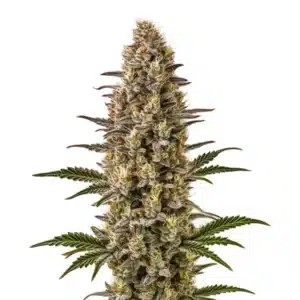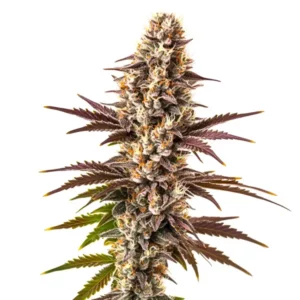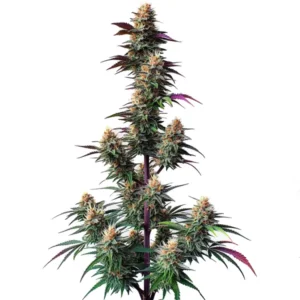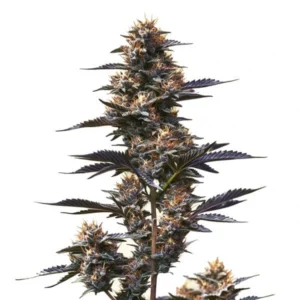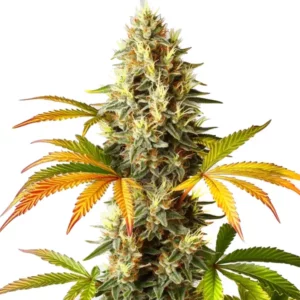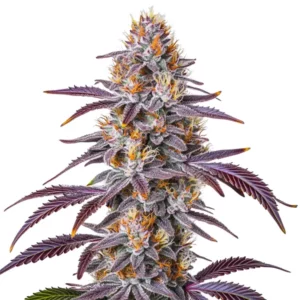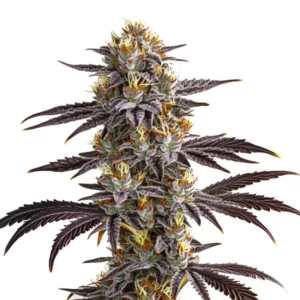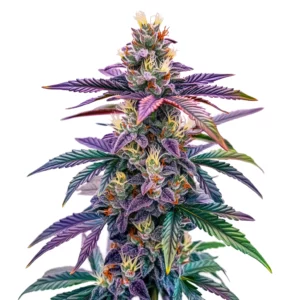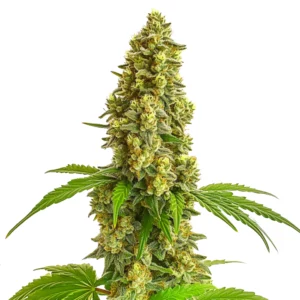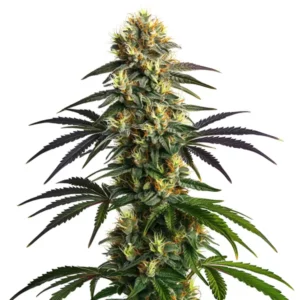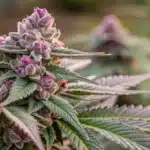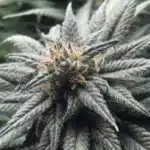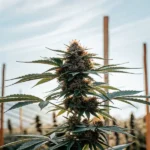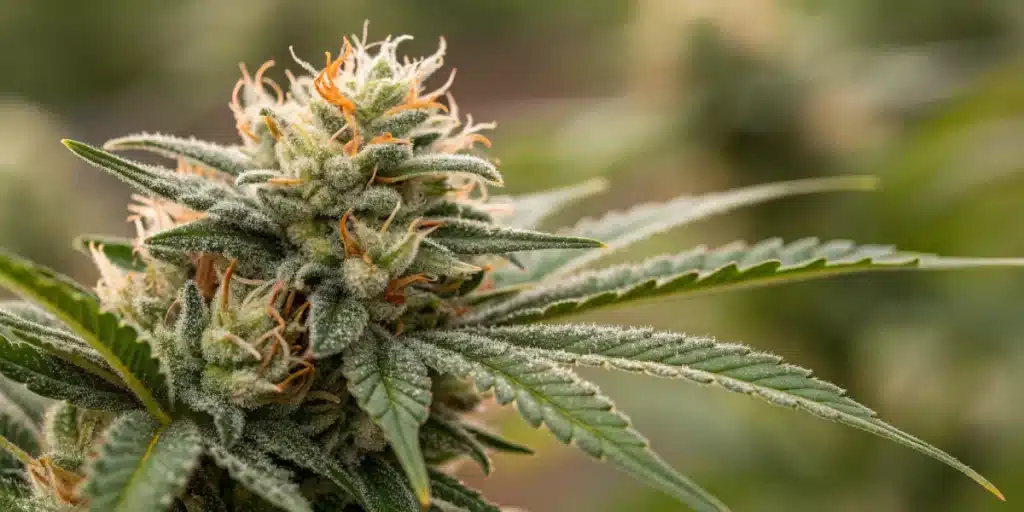
How to Grow Gelonade Weed Strain
Gelonade Weed Strain Description
Gelonade Strain is a high-THC cannabis variety bred from Lemon Tree x Gelato #41. With THC levels ranging from 15% to 31% and low CBD around 0.5%, it offers a happy, energetic experience while still inducing a relaxed state. This strain is mostly sativa (70%) with a hint of indica (30%), making it ideal for boosting mood and providing energy without overwhelming sedation. Its aroma combines notes of diesel, honey, kush, and lemon, and the flavor is equally enticing. Gelonade Weed Strain terpene profile is rich in beta-caryophyllene, beta-pinene, delta-limonene, geraniol, linalool, and trans-nerolidol – all contributing to its distinctive taste and potential medicinal benefits.
Gelonade is known for its low yield, producing about 1.47-1.82 oz/ft² (or 450-550 gr/m²) and roughly 10-15 oz per plant. Despite the lower yield, its potent effects and pleasing flavor make it popular among beginners and those seeking relief from arthritis, insomnia, and pain. The strain’s flowering period lasts around 8-10 weeks, and it thrives in all seasons, proving to be a forgiving yet rewarding choice for amateur growers.
Recommended Strains
Promos & Deals
Gelonade Weed Strain Growing Environment
Gelonade Weed Strain thrives in a stable, well-controlled environment. When growing indoors, maintain temperatures between 70°F and 80°F (21°C-27°C) during the day with slightly cooler nights to support healthy bud formation. During the vegetative stage, keep humidity around 60%-70% and reduce it to 40%-50% during flowering to prevent mold and promote resin production. High-quality LED or HPS lights are essential: provide 18-20 hours of light during early growth and switch to a 12/12 cycle when the plants start flowering.
For outdoor cultivation, select a sunny location with well-draining, nutrient-rich soil. Enrich the soil with compost or worm castings to boost fertility and support robust growth. Basic windbreaks help protect the plants from strong gusts, while consistent airflow and moderate temperatures ensure your Gelonade plants produce their best buds.
Setting Up Your Grow Space
Gelonade Weed Strain Indoor Cultivation
For indoor growers, a dedicated grow tent or small room is ideal. Cover walls with reflective material like Mylar to evenly distribute light. Use oscillating fans and an exhaust system with a carbon filter to control heat and odors. Start Gelonade in small pots using quality soil with a pH of 6.0-6.5, then transplant into larger containers as the plants develop.
Gelonade Weed Strain Outdoor Cultivation
Outdoor cultivation works well for Gelonade when you prepare the soil with organic amendments. Choose a site with full sun exposure and consider raised beds or large containers for better drainage. Simple windbreaks and regular maintenance such as weeding and timely watering will keep your plants thriving throughout the growing cycle.
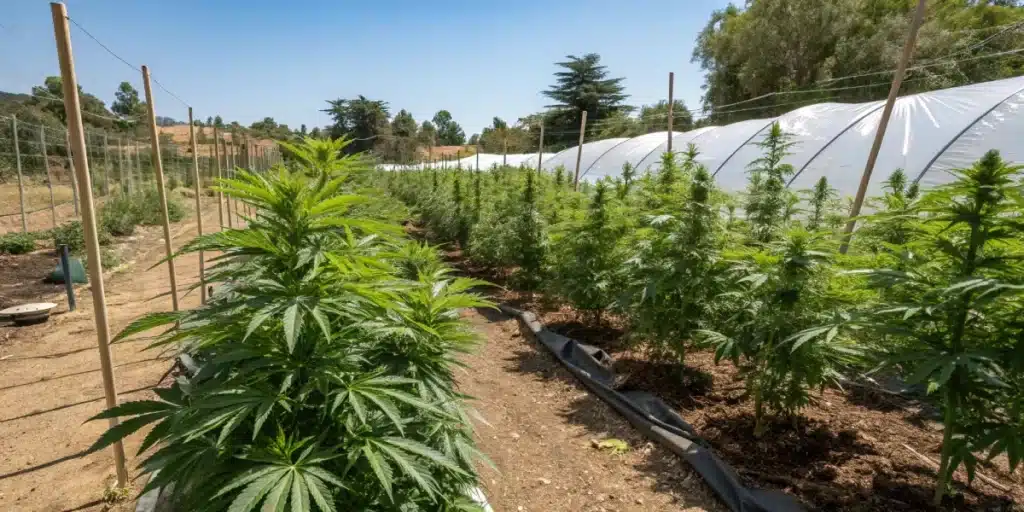
Seed Propagation and Germination
Start with premium feminized seeds from a trusted supplier. Soak the seeds in distilled water or place them on a damp paper towel for 24-48 hours to soften the seed coat and trigger taproot emergence. When you see a small taproot, plant the seed in a container with light, well-draining soil. Keep the temperature around 75°F-80°F (24°C-27°C) and maintain humidity at 60%-70% until the seedlings develop their first true leaves. Gradually increase light intensity to acclimate the young plants to stronger conditions.
Gelonade Weed Strain Vegetative Phase
During the vegetative phase, Gelonade grows quickly, building strong stems and lush foliage. Provide 18-20 hours of light per day and feed with a nitrogen-rich fertilizer to encourage robust growth. Active training methods like low-stress training (LST) or topping help create an even canopy and ensure light reaches all parts of the plant. Regular monitoring of temperature, humidity, and watering routines will set a solid foundation for the flowering phase.
Gelonade Weed Strain Flowering Phase
When you switch to a 12-hour light/12-hour dark cycle, Gelonade enters its flowering phase. During this period, the strain focuses on producing dense, resinous buds that exhibit its signature diesel-honey-lemon aroma. Feed the plants with a fertilizer high in phosphorus and potassium to boost bud formation. Maintain cooler temperatures (65°F-75°F) and lower humidity (40%-50%) to prevent mold and enhance resin production. Support heavy branches with stakes or trellises if necessary, and check trichome development frequently – when most trichomes appear milky with some amber, it’s time to harvest.
Fertilization and Nutrition
Proper nutrition is key for a successful Gelonade crop. Start with a nitrogen-rich fertilizer during the vegetative stage to build strong, healthy foliage, then switch to a blend high in phosphorus and potassium during flowering to promote robust bud development. Maintaining a stable pH between 6.0 and 6.5 helps ensure the plants absorb nutrients efficiently. Many growers also supplement with organic materials like compost or worm castings, which enrich the soil and enhance the overall flavor and yield.
Pest and Disease Control
Keep your grow space clean and inspect your Gelonade plants daily for pests such as spider mites, aphids, or thrips. Use organic remedies like neem oil at the first sign of infestation. Good airflow and prompt removal of dead or diseased leaves reduce the risk of fungal issues. If you spot mold or mildew, remove affected parts immediately and adjust the humidity to protect your plants.
Gelonade Weed Strain Harvesting and Curing
When most trichomes turn milky with some amber, it is time to harvest Gelonade. Use clean, sharp tools to carefully cut the branches, then dry the buds in a dark, well-ventilated area where temperatures stay between 60°F and 70°F. Ensure the buds have enough space for air circulation during drying.
After drying, cure the buds in airtight glass jars. Open the jars daily for the first week to release excess moisture, then let them cure for 2-4 weeks. This process refines the flavor and potency of Gelonade while preserving its unique aroma.
Gelonade Weed Strain Indica or Sativa?
Gelonade Weed Strain leans towards a sativa-dominant profile (70% sativa/30% indica). This results in a happy, uplifting high that energizes the mind and body while keeping you relaxed. It is ideal for daytime use when you need a burst of creativity combined with a gentle calming effect.
Advantages and Disadvantages
Advantages: Gelonade offers high THC potential (15%-31%) with a uniquely refreshing, citrusy-diesel flavor. It delivers an energetic, happy experience with notable medicinal benefits for arthritis, insomnia, and pain relief. Its relatively short flowering period (8-10 weeks) and beginner-friendly nature make it a solid choice for new growers.
Disadvantages: The strain’s yield is on the lower side, and its delicate flavor profile requires careful attention to nutrient and environmental conditions. Extra support during flowering might be needed to prevent branch breakage, and consistent care is crucial to avoid stressing the plant.
Why Buy Gelonade Weed Strain
Opt for Gelonade Weed Strain if you want a high-THC hybrid that offers a distinctive, refreshing flavor along with an uplifting, energetic high. Its balanced effects, medicinal benefits, and ease of cultivation make it an excellent choice for both recreational and medicinal users. Trusted suppliers listed on Blimburnseeds.com provide quality feminized seeds to ensure a reliable, rewarding grow even for beginners.
Common Growing Problems
Monitor your nutrient levels and watering schedule closely to avoid overfeeding or underwatering. Regularly check for pests and signs of mold. Quick, active management of environmental factors such as temperature, humidity, and airflow is essential to keep Gelonade healthy and productive throughout its growth cycle.
Similar Strains to Gelonade Weed Strain
Blue Dream
Blue Dream shares a similar fruity and uplifting profile with a balanced high that appeals to both novice and experienced growers. It is known for its consistent yields and ease of growth, making it a popular alternative among those who enjoy a sweet, energizing experience.
Super Lemon Haze
Super Lemon Haze offers a zesty lemon flavor with an energetic sativa high. Its vibrant citrus notes and uplifting effects make it a strong competitor to Gelonade, especially for growers seeking a strain with a bright, tangy aroma and creative boost.
Gelato
Gelato, one of the parent strains, provides a rich, dessert-like flavor and balanced effects. While Gelato tends to be more balanced overall, its sweet profile and potent effects offer a complementary experience to Gelonade, appealing to those who appreciate a complex yet smooth high.

Tips for Professionals
For experienced cultivators, advanced planning and precise control are key. Use timers and sensors to monitor temperature, humidity, and light levels. Keeping detailed logs of nutrient schedules, growth stages, and environmental conditions can help fine-tune your setup for optimal performance. Professionals often experiment with organic supplements, such as compost teas or microbial inoculants, to boost nutrient uptake and plant health. Active training techniques like low-stress training (LST) and topping are essential for maximizing light penetration and airflow, resulting in a higher yield and better bud quality. Paying attention to small details and continuously adjusting your methods will help you extract the best performance from Gelonade Weed Strain.
FAQs
What makes Gelonade Weed Strain unique?
Gelonade stands out due to its high THC potential (15%-31%), refreshing citrus-diesel flavor, and balanced sativa-dominant effects. Its unique terpene profile delivers not only an energetic high but also notable medicinal benefits for arthritis, insomnia, and pain relief.
How long is the flowering period for Gelonade?
Gelonade typically flowers within 8-10 weeks under optimal conditions. This relatively short flowering time, combined with its high potency, makes it attractive for growers looking for a quick turnaround without sacrificing quality.
Can I grow Gelonade outdoors?
Yes, Gelonade thrives outdoors when provided with ample sunlight and nutrient-rich, well-draining soil. Outdoor growers should amend the soil with organic matter and protect plants from strong winds to ensure robust growth.


